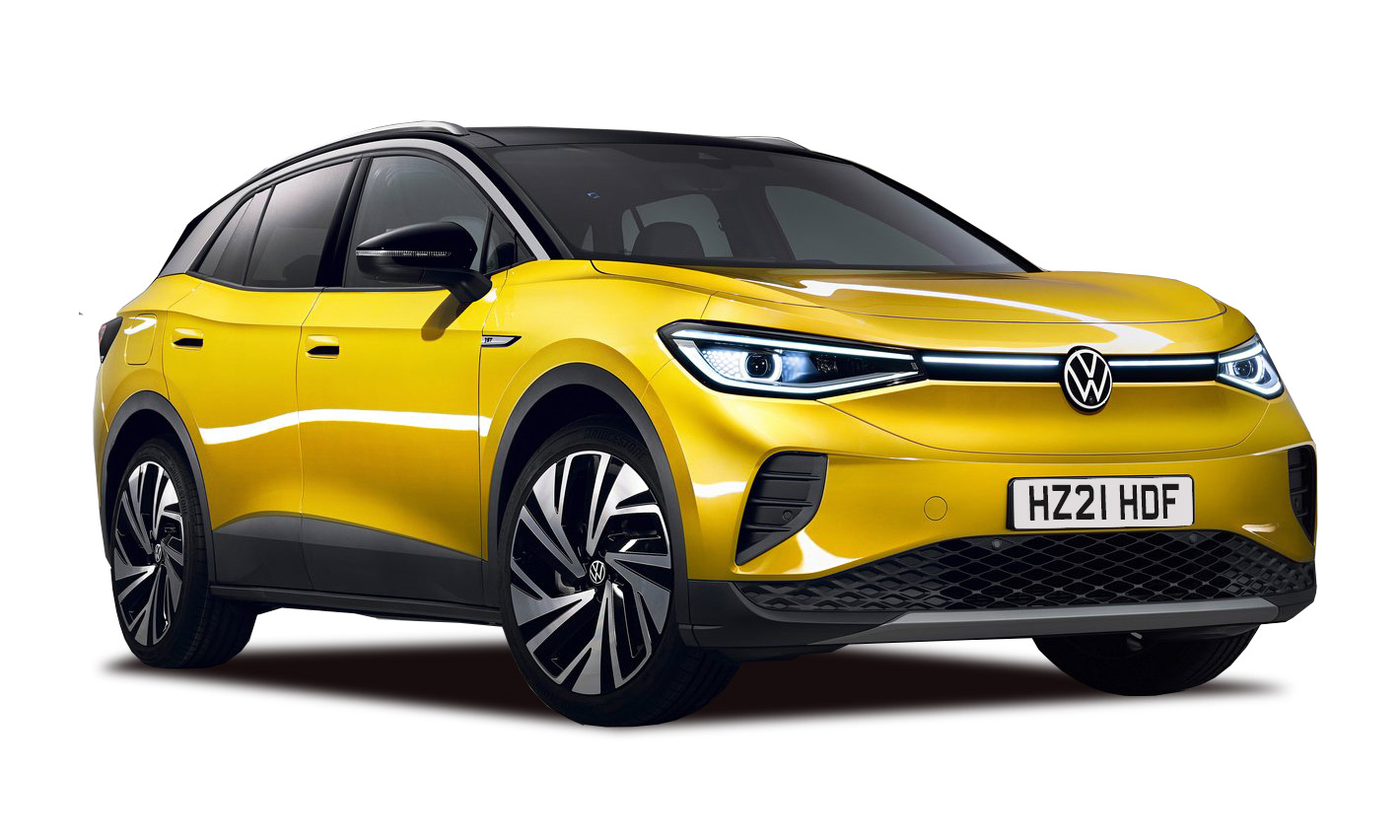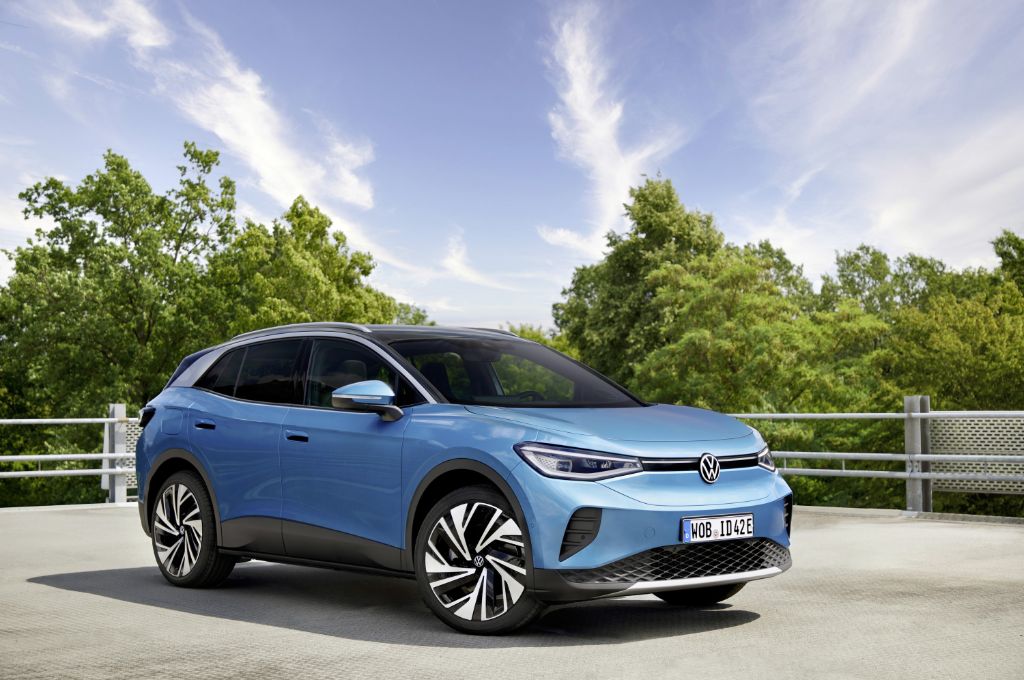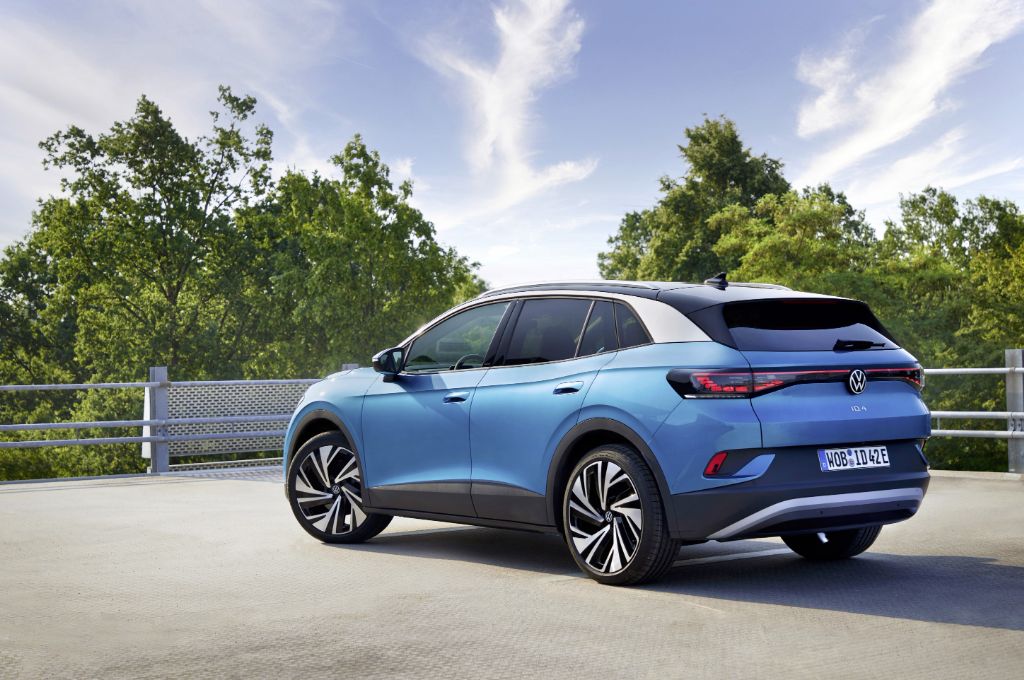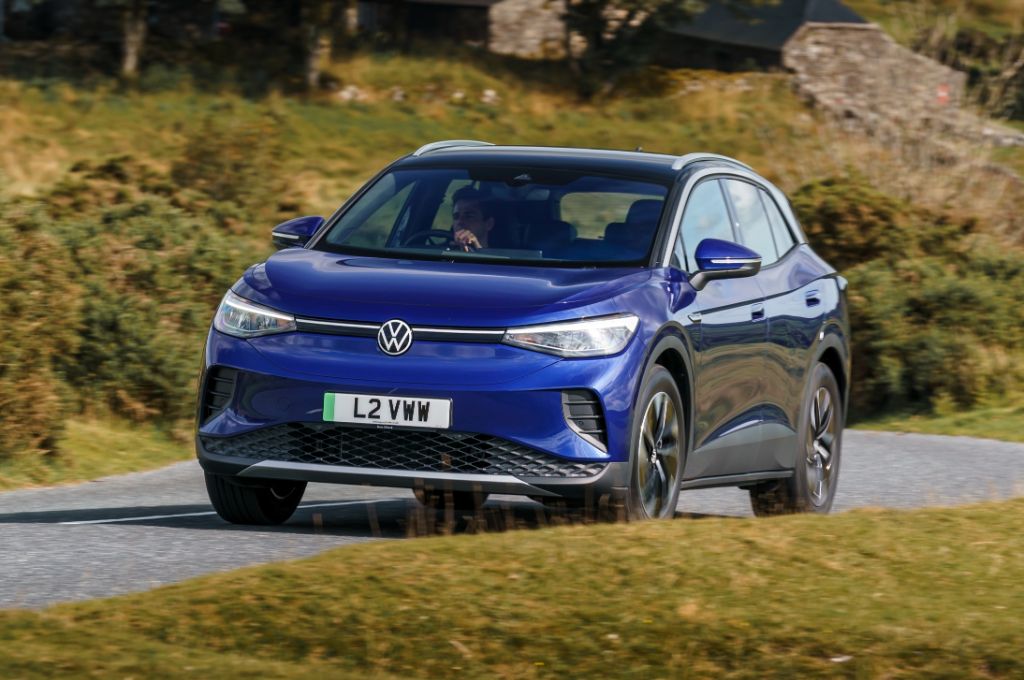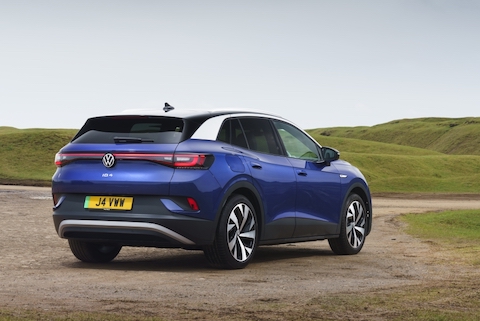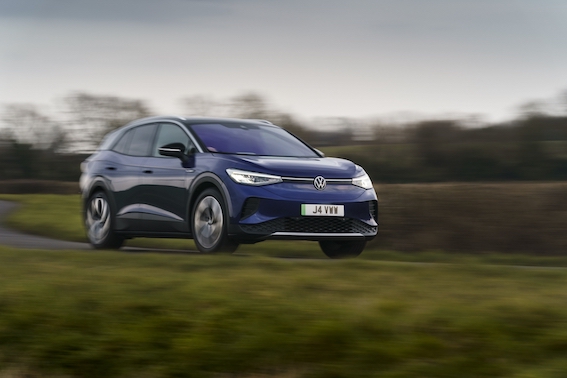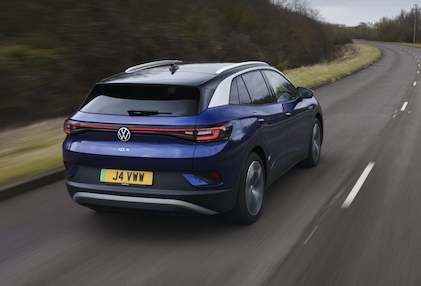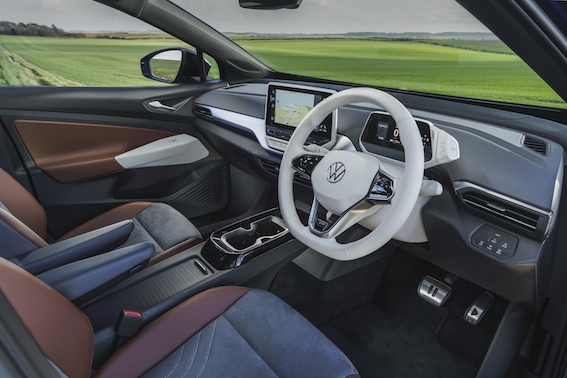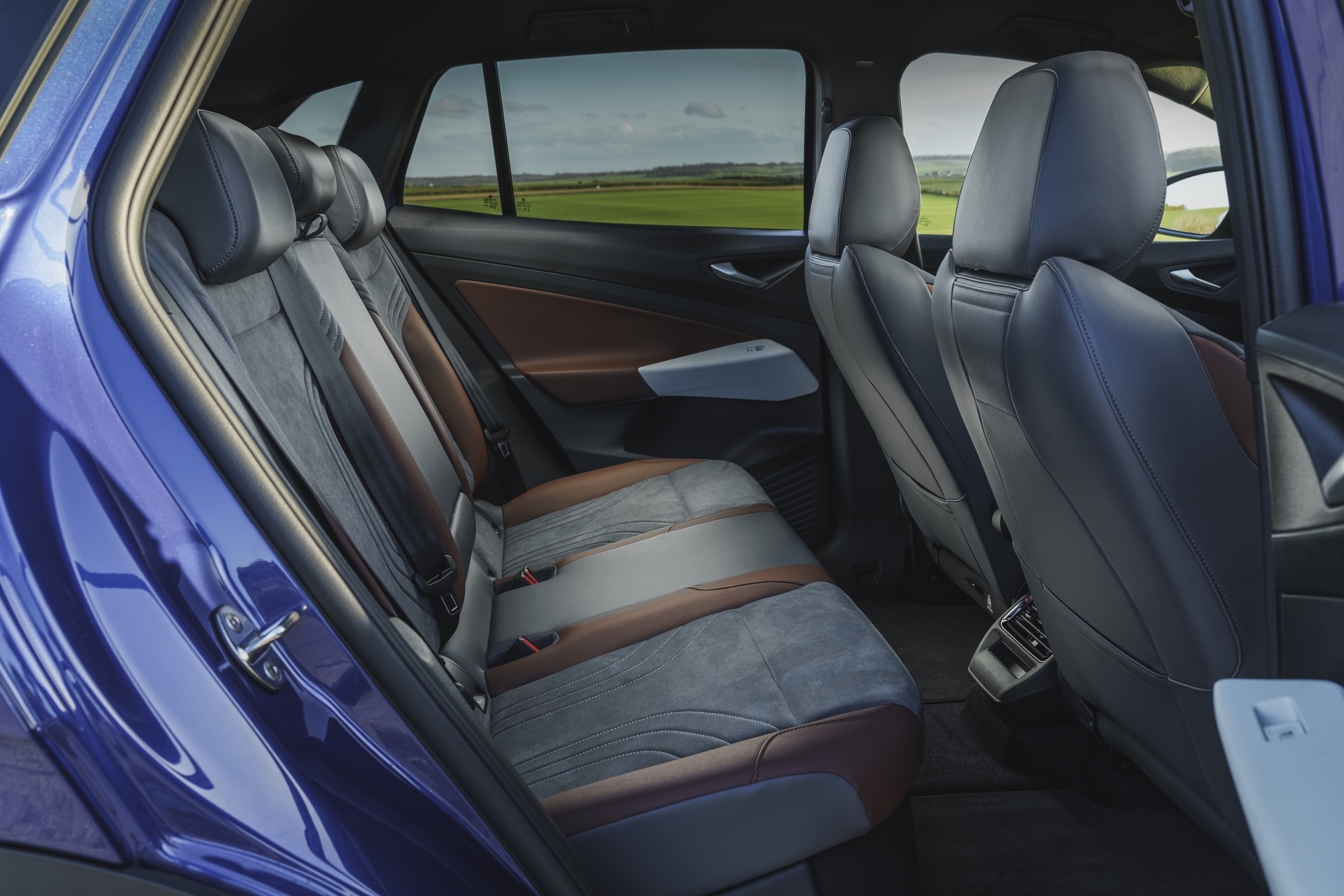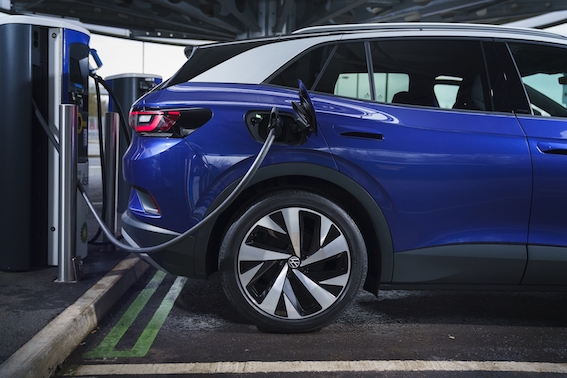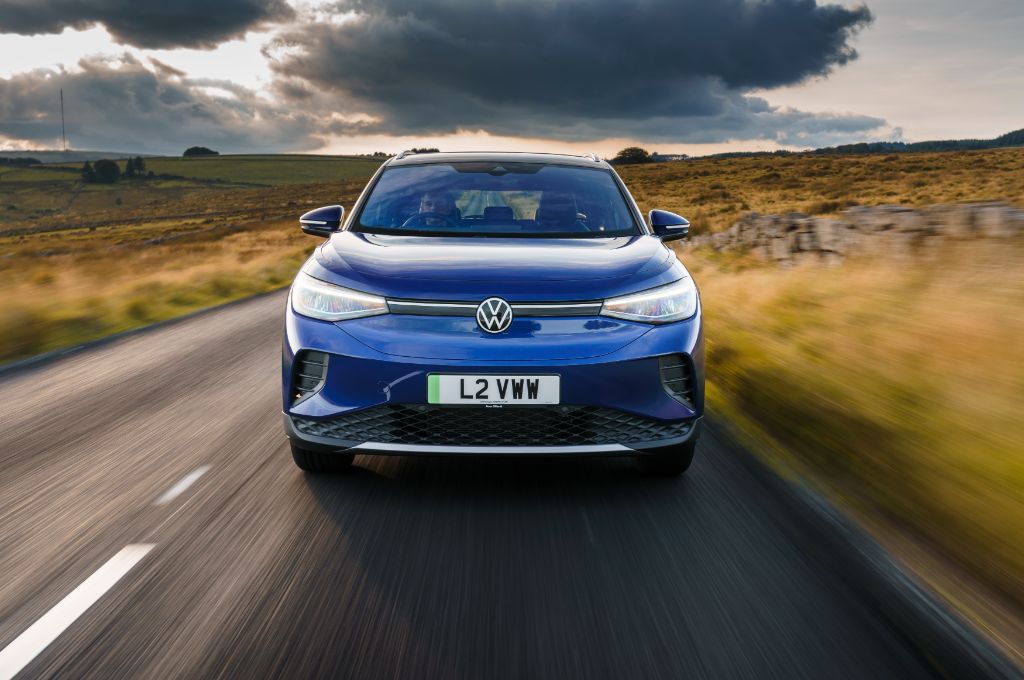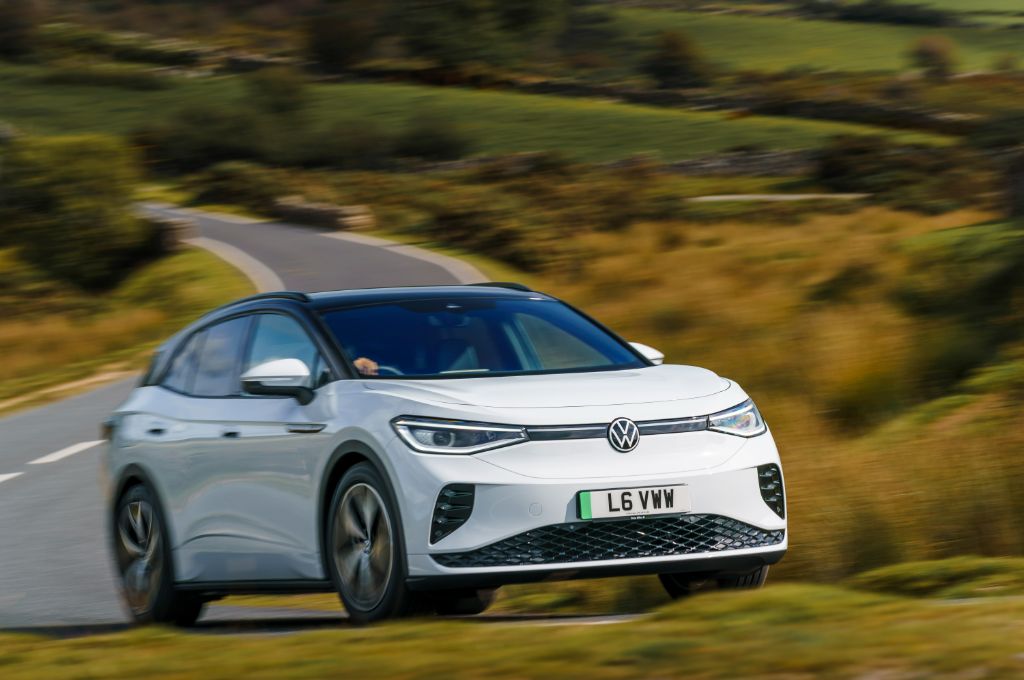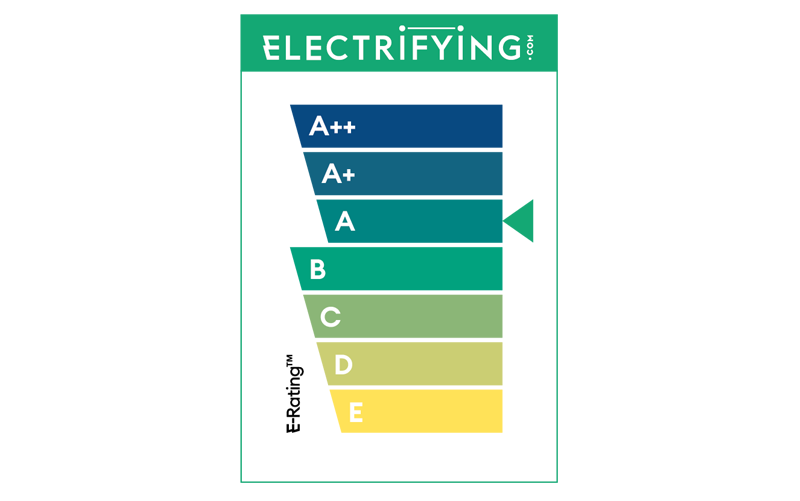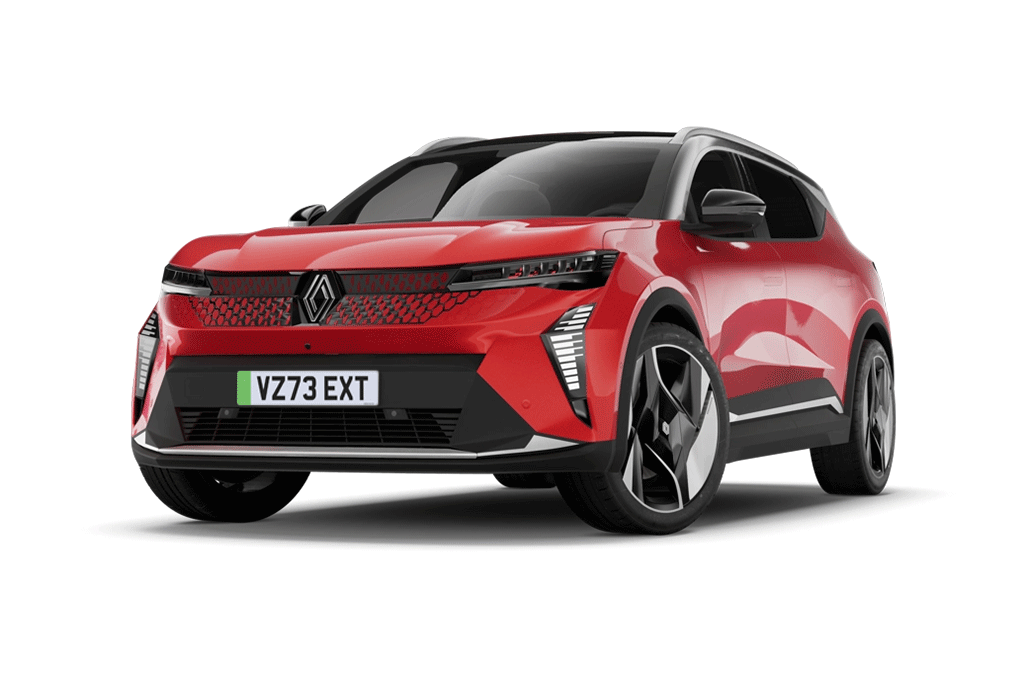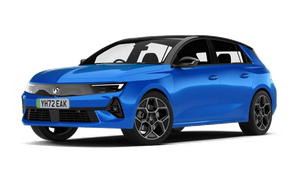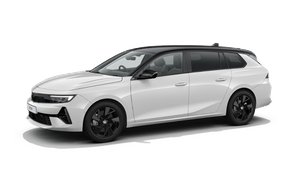Introduction
The Volkswagen ID.4 is almost 4.6-metres long and - sadly - is only offered as a five-seater. There's no seven-seater on the cards, for now. Still, it's seriously spacious; enough to be one of the roomiest family SUVs of its rivals, which include such big-hitters as the Tesla Model Y, Skoda Enyaq, Hyundai Ioniq 5, Kia EV6, Renault Scenic and Peugeot E-3008. It's not short of competition, to put it mildly.
The interior is pretty slick, with a dash design that's cool yet simple, soft-touch surfaces and some really nice textiles all around, decent visibility and a generally very modern, airy feel. Some of the plastics lower down the cabin are quite cheap and scratchy, but generally it feels really solid and pleasant. What about the touchscreen? Well, we would still say that you'll find the screens in the Tesla and Kia easier to use. But there have been a lot of software upgrades since the ID.4 first arrived, so while some of the touch-sensitive controls around the screen remain very annoying, the core functionality of the infotainment system has improved a lot.
Okay, so the ID.4 doesn't look particularly avant-garde on the outside but - as with the interior - it's clean, fresh and appealing. The Ioniq 5 will have far more appeal if you want something that looks really striking, but the ID.4's understated looks are a good thing for many people who'd rather have a fairly traditional car, albeit one that's also at the top of its game for tech and powertrain offerings.
Speaking of which, the ID.4 is available with two batteries and a variety of different models with either rear- or four-wheel drive. The range starts with the 52kWh battery, which comes with a 168bhp electric motor that powers the rear wheels, and manages a WLTP range of 224 miles. The rest of the lineup gets the 77kWh battery and a 282bhp motor, for a range of up to 349 miles. The sporty VW ID.4 GTX will do 321 miles, despite a 0-62mph time of 5.4 seconds.
Generally speaking, the ID.4 is really pleasant to drive - and it's now usefully faster, too, since a 2024 update brought more power across the range.
You may be disappointed if you're expecting a one-pedal brake regen' mode for about-town ease of use, as the ID.4 makes do with a very mild regen' setting in its default drive mode, but even the heavier 'B' mode isn't the full one-pedal setting that you get in the Nissan Ariya.
Rapid charging peaks at 125kW, which is very competitive with most rivals. A way off the Tesla Model Y and Kia EV6, sure, but it can be charged from 10- to 80% in around 40 minutes for the big battery, and more like 30 minutes for the smaller battery.
Verdict
The VW ID.4 is one of those cars that is continuously evolving. There haven't been any major facelifts since it went into production in 2020, but VW has been chipping away and quietly making improvements with software upgrades, tweaked trim lines and more, so the ID.4 you buy today is usefully improved over the one you'd have received at launch. And that's good, as this has always been a comprehensively good electric family SUV; It's roomy, safe, comfy, reassuringly familiar even if you're new to electric cars, and it goes a long way in between charges. With those constant small improvements having now also solved most of the niggles that the ID.4 suffered with initially, it's even more appealing. We wouldn't say the ID.4 is quite class-leading, but if you can get a decent finance deal then you've got a resoundingly likeable, well-rounded electric SUV.
Read on for our verdict on the VW ID.4, or click through for a more in depth look at the range, practicality, performance and pricing.
Like the VW ID.4? Try these...











